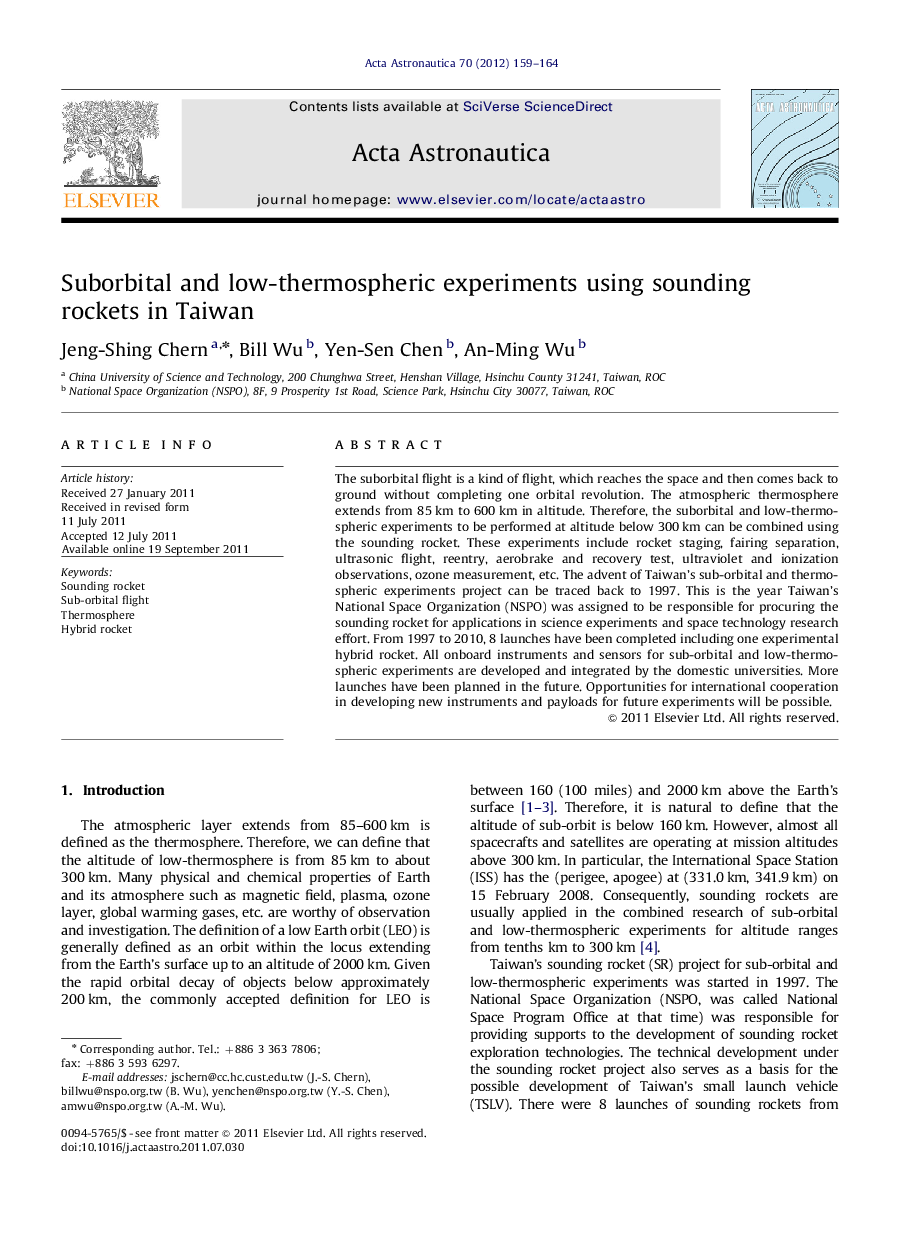| Article ID | Journal | Published Year | Pages | File Type |
|---|---|---|---|---|
| 1715389 | Acta Astronautica | 2012 | 6 Pages |
The suborbital flight is a kind of flight, which reaches the space and then comes back to ground without completing one orbital revolution. The atmospheric thermosphere extends from 85 km to 600 km in altitude. Therefore, the suborbital and low-thermospheric experiments to be performed at altitude below 300 km can be combined using the sounding rocket. These experiments include rocket staging, fairing separation, ultrasonic flight, reentry, aerobrake and recovery test, ultraviolet and ionization observations, ozone measurement, etc. The advent of Taiwan's sub-orbital and thermospheric experiments project can be traced back to 1997. This is the year Taiwan's National Space Organization (NSPO) was assigned to be responsible for procuring the sounding rocket for applications in science experiments and space technology research effort. From 1997 to 2010, 8 launches have been completed including one experimental hybrid rocket. All onboard instruments and sensors for sub-orbital and low-thermospheric experiments are developed and integrated by the domestic universities. More launches have been planned in the future. Opportunities for international cooperation in developing new instruments and payloads for future experiments will be possible.
► Advent of Taiwan's sub-orbital and thermospheric experiments using sounding rockets has been described in detail. ► From 1997 to 2010, 8 launches have been completed including one experimental hybrid rocket. ► It is intended to transfer the sub-orbital and thermospheric experiments to domestic universities in the future. ► Opportunities for international cooperation in developing new instruments and payloads for future experiments would be possible.
